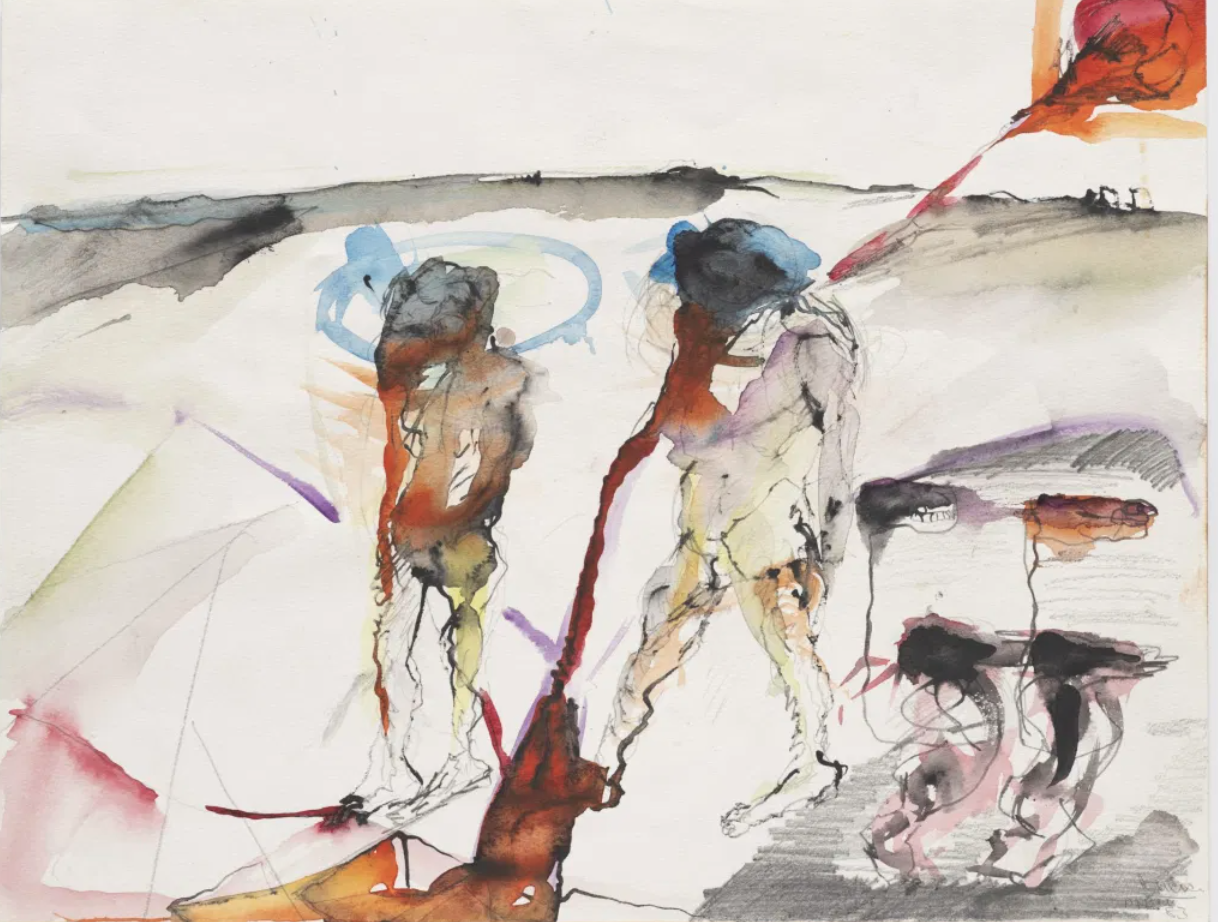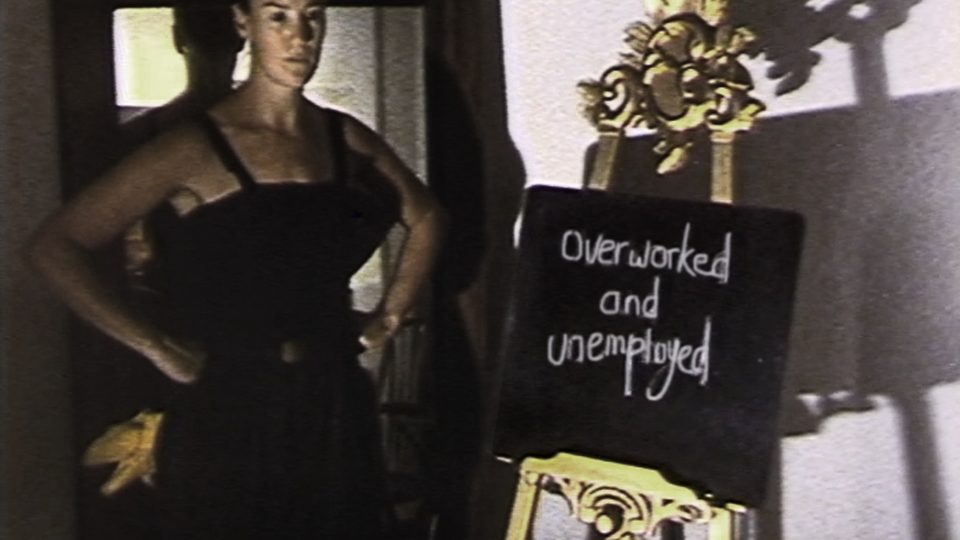
My critical essays move fluidly between the moving image, visual arts and literature. Lyssaria now also features a regular roundup of essays that I’ve published beyond this site on these various art forms, with a brief excerpt of each piece.
The Archeology of Black Thought: An Interview with Experimental Filmmaker Ephraim Asili, MUBI Notebook
“The people who had access to this great Black culture when it came out seemed to not be Black people. It’s fine that they had it, but it actually means that other people, whose heritage and culture it is, don’t’ have access to it. That’s always been something that I’ve thought about. It’s easy to rationalize buying records and books, but I am holding them as an archive of Black thought. Now I have a choice of how I use and share them. To me, there’s a politics there. I didn’t go to Harvard or Yale, someplace where I could access my own culture. It’s the stuff that I have and share.” excerpt
Cinema Against All Odds: Jean Renoir’s Nana and The Elusive Corporal, MUBI Notebook
In his book on Renoir, André Bazin noted pointedly that Nana helps us understand Renoir’s naturalism not as an imitation of reality, but rather a vision that straddles the realm between reality and form. That vision was fully realized later, with talking pictures, but the silent Nana is a step in this direction. With its stark, contrasty images, stagey set design and expressive acting, it looks back to German expressionist cinema. Hessling’s fluttery, mime-like performance makes the artifice even more striking. And yet, Nana’s delights stem primarily from the contrast between Hessling’s restlessness and the inwardly implosive delivery of her co-actors, particularly the fabulous Werner Krauss as the tormented Count. excerpt
Interview with Alexander Nanau, director of Collective, Hyperallergic
“Documentary teams, at least the ones I know, genuinely want to portray the world as it is. Viewers are looking for such intentionality. They don’t trust the big media outlets anymore. Which is not good, in a way. It can be misused, with visually attractive documentaries that want to win the audience for one or the other side.” excerpt
Lucia Nogueira’s Sensuous, Smoky Visions of Hell, a solo show at Luisa Strina Gallery, Hyperallergic
Brazil is discovering Nogueira posthumously, following several solo exhibitions in Europe. Her latest show, at Luisa Strina Gallery in São Paulo, includes a stunning series of 14 works in watercolor and pencil, entitled Inferno Divine Comedy (1983), found in storage by Nogueira’s husband, the gallerist Anthony Reynolds. This previously un-exhibited body of work sheds new light on Nogueira’s production — particularly her gift for haunting evocations of the female body. excerpt
What Not to Miss at the 2020 New York Film Festival, Hyperallergic
On the more ruminative side, Ephraim Asili’s The Inheritance, Song Fang’s The Calming, Tsai Ming-Liang’s Days, and C.W. Winter and Anders Edström’s The Works and Days (of Tayoko Shiojiri in the Shiotani Basin), all find uncanny grace in the mundanity of human existence. Days, in particular, is an incandescent, austerely framed story of two men who share an evening that combines sex and healing, their brief bond unspools as a nagging, tactile memory. excerpt
Lucrecia Martel’s Feminine Monsters, Hyperallergic
When asked how she approaches identity, Argentine writer/director Lucrecia Martel told an interviewer, “When I write, I don’t think if [my character] is a man or a woman, an adult or a child. It’s better to think of them as if they were monsters.” Three of Martel’s films — La Ciénaga (2001), The Headless Woman (2008), and Zama (2018) — are now available to stream on Criterion Channel, providing an opportunity to consider how she uses the concept of the monstrous to create suspense and estrangement between her characters. Tellingly, her monsters are often women, especially in the earlier two films. Martel doesn’t deny the importance of the feminine or feminism, but rather expands and complicates how we view female agency and power. To the extent that her women stake out as big a claim to monstrosity as men, they’re certainly feminist, even if perversely so. excerpt
In Sonia Gomes’s Hands, Textiles Evoke Resilience, a review of a solo show at Pace Gallery East Hampton, Hyperallergic
The Black Brazilian artist Sonia Gomes may have bloomed late, but she’s been making things ever since she can recall. Born in 1948, in Caetanópolis, Minas Gerais, Gomes entered the Guignard University of Art, in Belo Horizonte, in 1994, already in her mid 40s, after giving up a career in law. But as an adolescent in Minas, a state famous for textiles, Gomes admired African dance and clothing. Gomes has said in interviews that her wearing of wraps and necklaces inspired a teacher to once call her a “walking installation.” It’s a fitting description for this prodigious artist, whose practice stems from joining two passions: one for the body’s elemental power, as the seat of spirit and memory; the other for fabrics, with their malleability and animistic force. excerpt
Rubem Fonseca: Modernist Crime Fiction’s Reluctant Star, CrimeReads
Cinema was Fonseca’s greatest passion after literature. His cinematic style meant that he could zoom in on just the right detail. Like a fine cameraman, he was also sensitive to light, particularly when it is fraught with emotion (e.g. when Mattos sees the neons in a red-light district he recalls from his adolescence). Whereas filmmakers often say that they envy writers, Fonseca flipped this notion: He insisted that a writer must make his readers see. It’s no wonder then that the main protagonist of his most evocative novel, Vast Emotions and Imperfect Thoughts (1988), is a film director. excerpt

